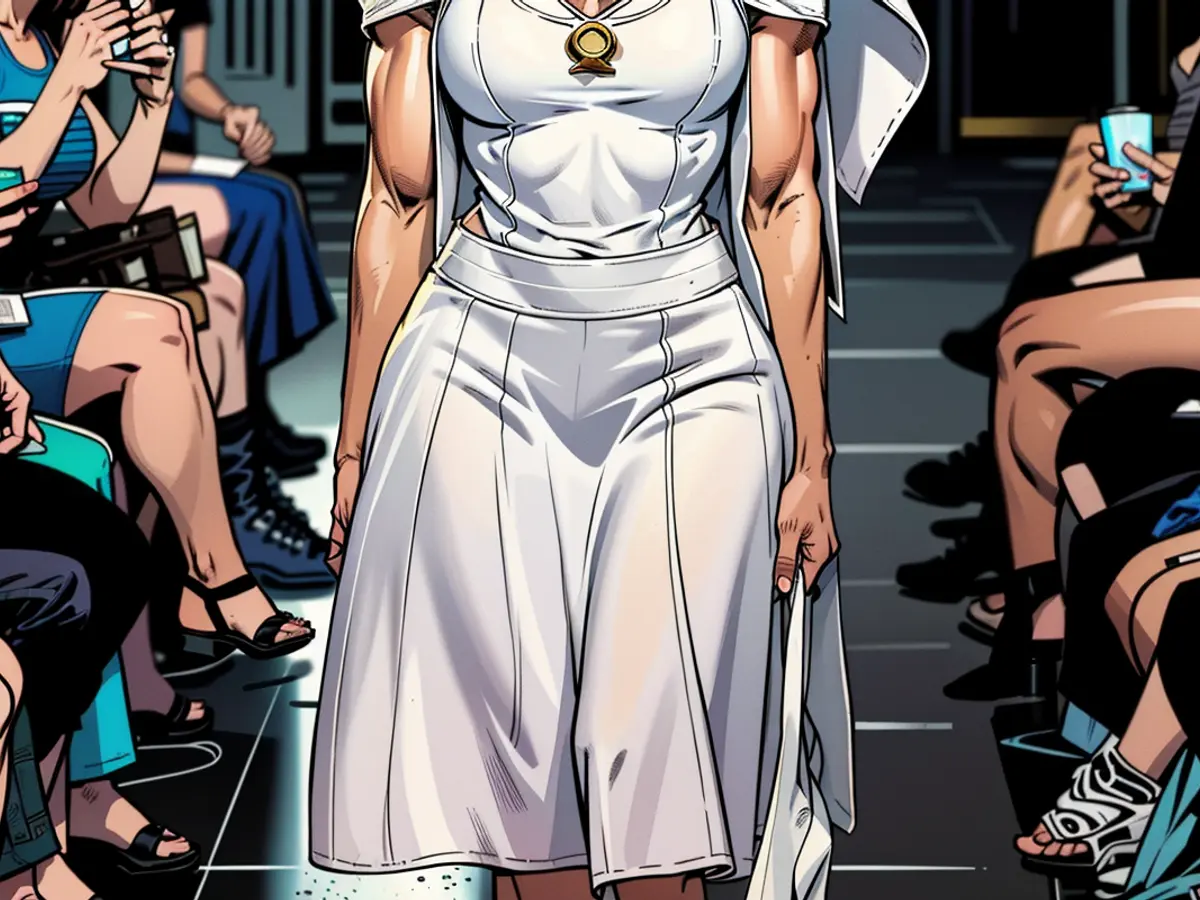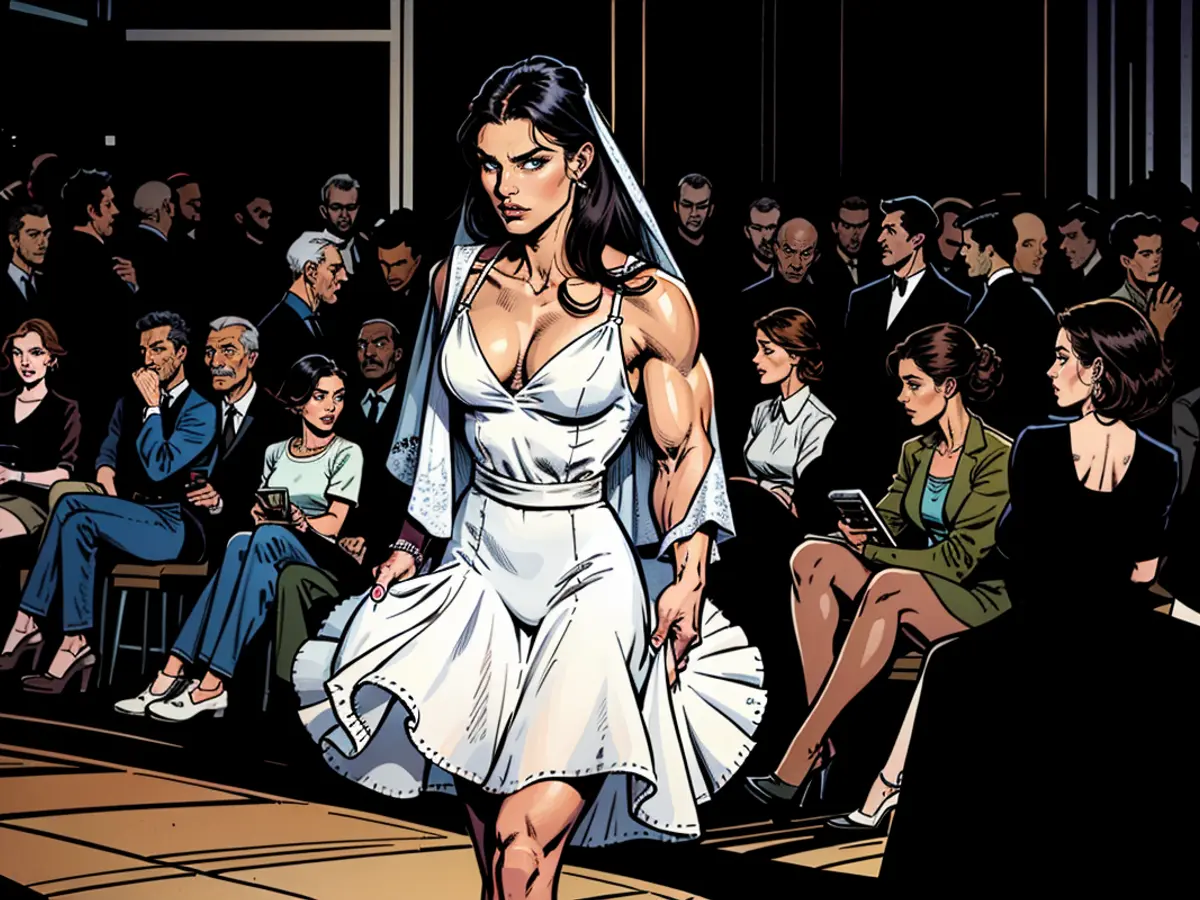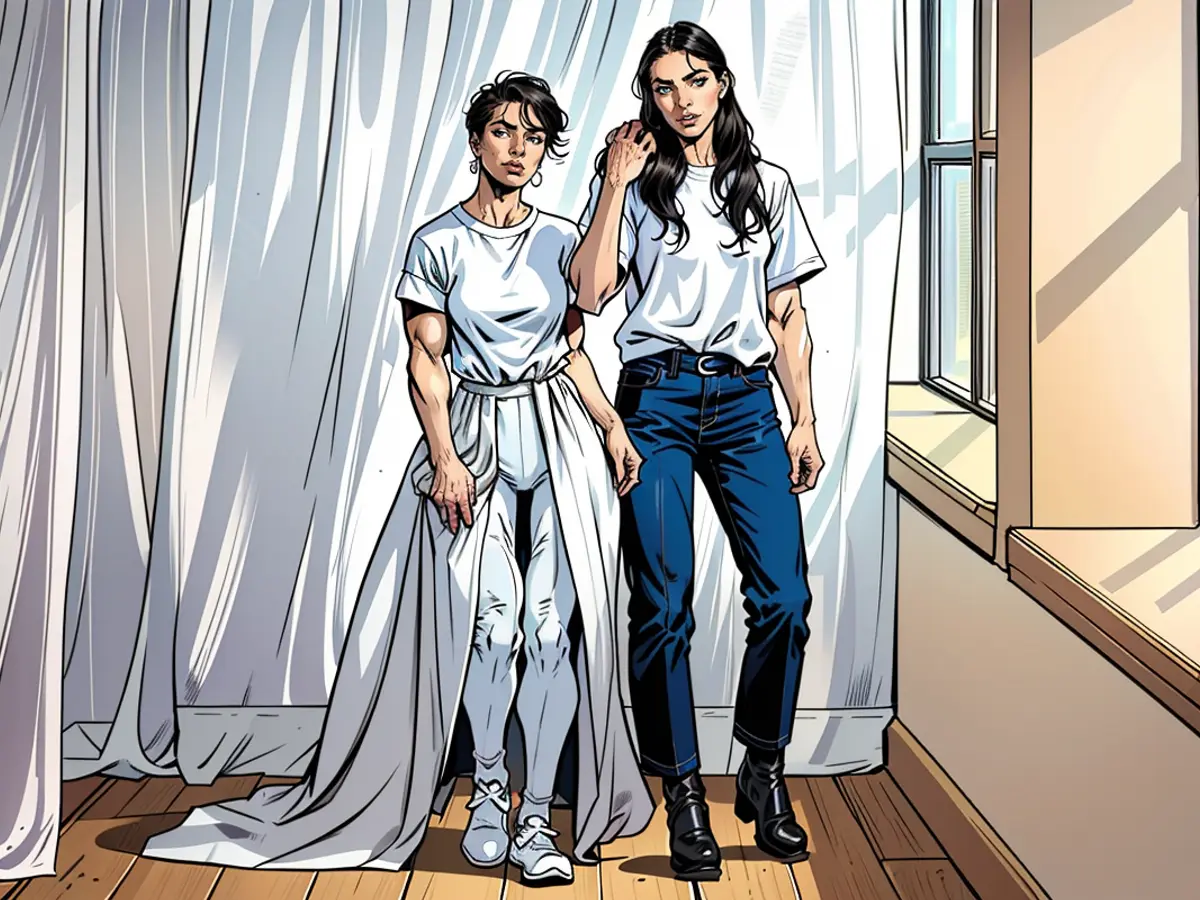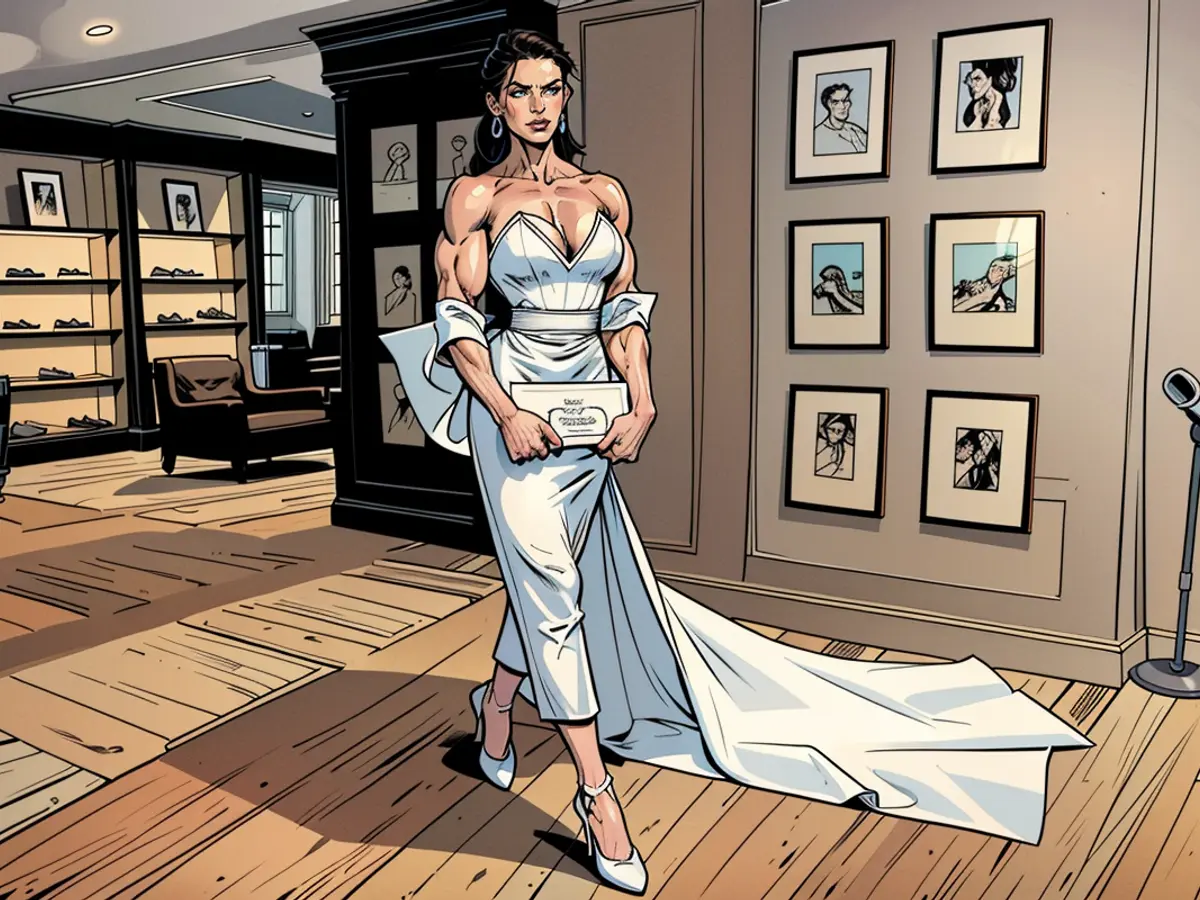Gen-Z consumers are redefining the bridal fashion sector with their unique preferences.
(Vice News) — Merely an hour following her engagement in Venice, Italy last year, Christyne de Quesada started searching the web for white outfits to wear for her numerous upcoming wedding-related events: An engagement party, a bachelorette weekend, a courthouse ceremony, and a bigger celebration in Mexico City.
However, the Miami-based HR manager found it tough to find high-quality, under $1,000 ensembles that represented her individuality.
"It actually drove me a bit mad," de Quesada said. "I bought almost seven things and returned every single one." Instead, she opted to look beyond conventional bridal wear brands and retailers. She eventually selected an ivory two-piece set by Shanghai-based brand ShuShu Tong, which she purchased from the e-tailer Ssense, for her courthouse ceremony, a Vera Wang gown she describes as "traditional and very princess-like" for her Mexico City wedding ceremony, and a bespoke ivory skirt and corset set by Florida-based bridal designer Gabriella Arango, coupled with Gucci shoes, for the reception.
Today's millennial and Gen-Z brides-to-be, like de Quesada, are not just looking for a wedding dress, but an entire wardrobe for pre- and post-wedding events. This expansive shopping habit is contributing to the global bridal wear market's growth, projected to grow at a rate of 3.5 percent annually and reach $83.5 billion by 2030, according to the Global Bridal Wear Market Industry report.
However, it's not traditional players like David's Bridal (who filed for bankruptcy and were bought by Cion Investment Corp last year) that are benefiting. This new generation of brides are shopping outside the traditional bridal market to find less generic ensembles that better reflect their personal style.

"The bridal industry is like an old boys club. They stick to 'If it ain't broke, don't fix it' and are too comfortable with the limited options they've given you," said Caroline Crawford Patterson, a bridal stylist and designer. "What they don't realize is that the consumer is different, and there's a big opportunity to shake things up."
New opportunities in the bridal market
The industry was largely halted in 2020, but weddings returned to pre-pandemic levels last year, with couples hosting over 2 million weddings, according to The Wedding Report. However, the post-pandemic bridal wear landscape is remarkably different.
Historically, brides have been limited to independent boutiques, department stores, and chains like David's Bridal. Now, brides-to-be are open to wearing any white dress and are casting a wider net.

It's an evolution of a stagnant space. "Salons could get away with offering dresses that weren't stylish or suited the fashion-forward bride or weren't size-inclusive, and the consumer, who's already spending a lot of money, just had to deal with it," said Crawford Patterson, who got married in 2021.
Anthropologie was one of the first non-bridal retailers to enter the space with the launch of its Bhldn line in 2011. (It's now called Anthropologie Weddings.) Today, Reformation, Abercrombie & Fitch, and Revolve all offer wedding edits on their websites, as does The RealReal. Even fast fashion brands like ASOS, Forever 21, Lulus, and Shein are expanding their bridal selections.
It's not just mass retail that's taking advantage. New York-based designer Jackson Wiederhoeft launched a made-to-order bridal segment in 2020 and now spends up to a year and a half designing wedding dresses for clients, including initial appointments, fittings, alterations, and consultations. Despite the time and resources invested, Wiederhoeft finds it “worth it,” as they get to establish a close relationship with clients.
"It's not just a dress for many people, it is the dress," said Wiederhoeft.

For an emerging designer like Wiederhoeft, bridal serves as "a safety net," providing "a floating line of credit" for the rest of their business. With bridal, Wiederhoeft can collect 100 percent of the garment's cost upfront and directly from the client to cover production, material, and overhead costs. A Wiederhoeft wedding dress can cost between $3,000 and $25,000 for ready-to-wear bridal garments; pricing for custom dresses starts at $25,000. And unlike ready-to-wear, the brand's bridal segment is not subject to discounting.
"Some garments I made in my apartment four years ago are still in our showroom. I still use them as sale samples, and the styles are quite evergreen," they said. "Whereas ready-to-wear has the shelf life of an avocado."
What today's brides want — and don't
As younger millennials and Gen-Zers approach the altar, their ceremonies can differ greatly from previous generations, including their parents. (According to the US Census Bureau, the average American woman is 28.6 years old when they get married, and the average American man is 30.5 years old.)

Today's young people are more likely to support same-sex and interracial marriage, enter into non-traditional relationships such as polyamory, and are more likely to forgo marriage entirely in favor of cohabiting with a partner long-term, according to research from Pew Research Center.
"Hillary Taymour, chief of Collina Strada, shares that some clients are eager to break away from traditional weddings and are more interested in investing in a home," said the creative director. She noted her clients prefer items that can be reused, not just for the wedding day.
According to Taymour, modern brides view anything as potential wedding attire. Her clients are drawn to vibrant designs and eccentric jewellery, such as Collina Strada's frog ring, often used as engagement or wedding bands to signify the special day.
The change in bridal wear is even beneficial for businesses with a long-standing focus on the industry, as stated by Andrew Kwon, founder of his own label. He introduced an eveningwear line alongside bridal in 2022.

"The main issue with bridal is the scarcity of repeat clients," Kwon explains. "Expanding into eveningwear and colorful dresses has allowed me to attract non-conventional brides, their bridesmaids, and even mothers," he added.
Shops aiming to appeal to this new, innovative bridal market are modifying their inventory to align with shifting wedding perspectives. Last month, online retailer Ssense launched its second "anti-bridal" collection, showcasing unusual gowns, flower girl dresses, and accessories.
"We cater to an audience that's open to new ideas and fluid in their thoughts," said Brigitte Chartrand, vice president of womenswear buying and the Everything Else segment at Ssense. "The items we designed didn't feel classic... it provides a unique twist to what bridal could be," she concluded.
This article was originally published by The Business of Fashion, a partner of CNN Style. Explore more stories from The Business of Fashion here.

Read also:
In her search for affordable and unique bridal ensembles, Christyne de Quesada looked beyond traditional bridal wear brands and retailers, ultimately selecting an ivory two-piece set from Shanghai-based brand ShuShu Tong and a bespoke ivory skirt and corset set from Florida-based bridal designer Gabriella Arango.
With Gen-Z consumers redefining the bridal fashion sector, a new generation of brides are shopping outside the traditional bridal market, seeking less generic ensembles that better reflect their personal style.








